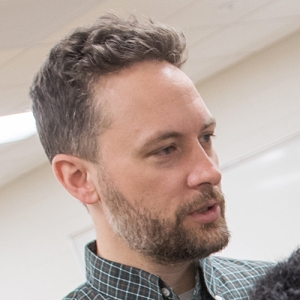When Carson Miller ’15 needed a pair of tweezers for the new Collaborative Design Studio, it was simply a matter of hitting the print button.
The new studio lab, located in the basement of the Peter Irving Wold Center, is the home to a Stratasys Connex 500, more commonly known as a 3D printer.
Installed during winter break, the 3D printer has already printed several soft robots, robot parts and equipment for the lab, including the tweezers and a wrench.
A National Science Foundation Major Research Instrumentation Grant totaling $333,531 made the purchase of a printer possible. John Rieffel, assistant professor of computer science, along with Ann Anderson, the Agnes S. MacDonald Professor of Mechanical Engineering, and Steven Rice, professor of biology, were the lead faculty members on the grant. Also included in the proposal were Takashi Buma, the John D. MacArthur Assistant Professor of Electrical and Computer Engineering, Michael Hagerman, professor and chair of the Chemistry Department, and Robert Olberg, the Florence B. Sherwood Professor of Life Sciences.
Several other faculty members have expressed interest in using the printer for their research and classroom work. Later this term, students in Assistant Professor Andrew Burkett’s “Manor House Literature” course will design their own version of an English manor, which will be printed.
Miller, Kadeam Vendryes ’15 and Joshua Fields ’15 work in the labs as technicians, helping faculty and other students make their creations.
“They've taken the initiative to train themselves on the tools and equipment and have already started designing and printing their own things,” said Rieffel.
Miller, an electrical engineering major, said he never dreamed of being able to get hands on experience with such advanced technology. “At a larger university, it would be a professor doing all of this,” he said.
The machine allows students who have designed projects on computer software to print their project in a matter of hours. The printer uses an additive process, where successive layers of resin material are laid down into different shapes.
